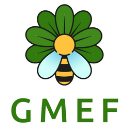Background
Edge Green Common is located on the urban fringe of Golborne and Ashton-in-Makerfield in Wigan. The site is a 5ha fragment of lowland raised bog, a once extensive habitat in North West England, of which only about 3 or 4% now remains due to a long history of drainage for agriculture, urban development and extraction. The site is currently underused by the local community though there is informal public access with 0.8 km of unsurfaced grass path rides across the site. Once part of a local mossland system the site is strategically located to the north of Chat Moss, a globally important peatland network in Greater Manchester. Edge Green Common is though, now degraded, and the local mossland system fragmented by urban infrastructure and agricultural land use. The site does however retain the potential to become an important stepping stone between all of the Manchester mosses and is key to developing the connectivity of the wetland corridor of the North West.
The Need
Grassland management activities ceased approximately 30 years ago and the peatland soils on the site are now dominated by coloniser species, particularly purple moor grass. This is inhibiting the expansion of the three recorded Sphagnum Moss species on site which can only thrive in the specific conditions peatlands provide. LWT surveys in 2020 also recorded that water is visibly draining from the site via three flushes, probably old ditches, which is drying out the site. Without intervention the site will continue to deteriorate and the opportunity to retore the site’s mossland status will be lost.
Our Solution
Hydrological surveys and feasibility studies undertaken by LWT during 2020 show that Edge Green Common is capable of retaining water and is an ideal site for restoration. We will remove scrub and soil from some areas, install bunds to control water levels and introduce specialised flora such as Common Cotton Grass and Sphagnum Moss species to enable the site to revert back into lowland raised bog. The soils that we remove will be used to re-profile the network of paths that are currently cracked and uneven to greatly improve visitor experience and safety.
Our Proposed Impact
Our project will cost approximately £100,000 and will deliver the following outcomes:
-
Significant strengthening of the Lowland Raised Bog Corridor of the North West, the site will provide a vital stepping stone habitat delivering the following benefits;
-
Increased opportunity for bog plants that haven’t been present on the site for over 100 years to thrive;
-
Enhanced opportunities for red list species including Water Vole and Willow Tit as well as invertebrates such as Crane flies & Dragonflies and amphibians and reptiles;
-
Carbon remaining locked up and prevented from directly re-entering the atmosphere and adding to the greenhouse effect;
-
Water is cleaned and stored, resulting in flood alleviation for surrounding areas.
-
Aside from the biodiversity benefits outlined above, the site provides a fantastic opportunity to develop a community asset with current plans as follows:
-
Interpretation: Telling the story of the site and recent restoration work through advanced digital aspects and use of augmented reality;
-
Access improvements: Restored paths and the carpark could be resurfaced and extended to include a grass creep overflow carpark to be used during busier periods;
-
Community Engagement: Community planting events and volunteering opportunities to promote community ownership and raise the profile of the site.

